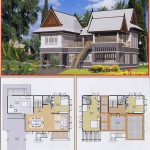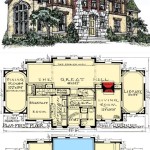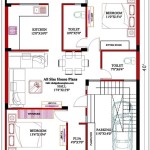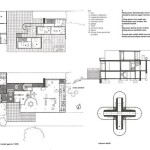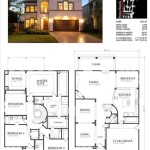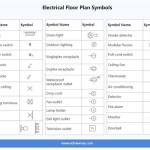Essential Aspects of Simple Passive Solar Home Plans
Harnessing the sun's energy to reduce energy consumption and create a comfortable indoor environment is a key aspect of sustainable building practices. Simple passive solar home plans offer a cost-effective and environmentally friendly approach to maximizing passive solar gain, making your home a cozy and energy-efficient haven.
Orientation and Window Placement
The position of your home in relation to the sun plays a crucial role in passive solar design. Place your home's main living spaces and windows on the side facing the sun (south in the Northern Hemisphere and north in the Southern Hemisphere). This allows for optimal sunlight penetration.
Invest in large windows with a high solar heat gain coefficient (SHGC) to maximize heat gain. Keep windows unobstructed by trees or structures to allow ample sunlight to enter your home.
Thermal Mass
Thermal mass is a key element in storing solar heat during the day and releasing it slowly at night. Incorporate materials with high thermal mass, such as concrete, brick, or stone, into your home's structure. These materials absorb sunlight during the day and gradually release it as the temperature drops.
Consider using thermal mass flooring, such as radiant floor heating, to distribute heat evenly throughout your home. This creates a comfortable and temperate environment.
Insulation and Airtightness
To prevent heat loss, ensure your home is well-insulated and airtight. Install high-quality insulation in walls, ceilings, and floors to minimize heat transfer. Seal any cracks or gaps around windows, doors, and other openings to reduce air leakage.
A properly insulated and airtight home will maintain a stable indoor temperature, making it easier to regulate with passive solar gain.
Overhangs and Shading
Strategic use of overhangs and shading can help control the amount of sunlight entering your home. In the summer, overhangs can provide shade to windows, preventing excessive heat gain. In the winter, when the sun is lower in the sky, the same overhangs will allow sunlight to enter your home.
Consider using deciduous trees or landscaping to provide natural shading in the summer while allowing sunlight to penetrate in the winter.
Solar Collectors
In addition to passive solar design principles, consider incorporating active solar components, such as solar thermal collectors or photovoltaic (PV) panels. Solar thermal collectors can provide hot water or space heating, while PV panels generate electricity to reduce your reliance on grid-tied energy.
By combining passive solar design and active solar technologies, you can create a highly energy-efficient and sustainable home.
Conclusion
Simple passive solar home plans offer a cost-effective and environmentally friendly way to reduce energy consumption and enhance indoor comfort. By optimizing orientation, utilizing thermal mass, ensuring proper insulation and airtightness, incorporating shading elements, and exploring solar collectors, you can create a home that harnesses the sun's power to provide a cozy and energy-efficient living space.

Passive Solar House Plans Version 3 Byexample Com

Passive Solar House Design Ecoliv

Passive Solar House Plans For Building In Phases Byexample Com Simple Small Floor

Passive Solar Design Eco Advisor

Green Passive Solar House Plans 3

Green Passive Solar House Plans 3

Passive Solar House Plans For Our Off Grid Homestead Byexample Com

3 Bedroom Adobe House Plans Plan 2268

Passive Solar Home Plan At Alternative Heating Com House Design Homes Plans
What Does A Passive House Cost To Build Leanhaus

